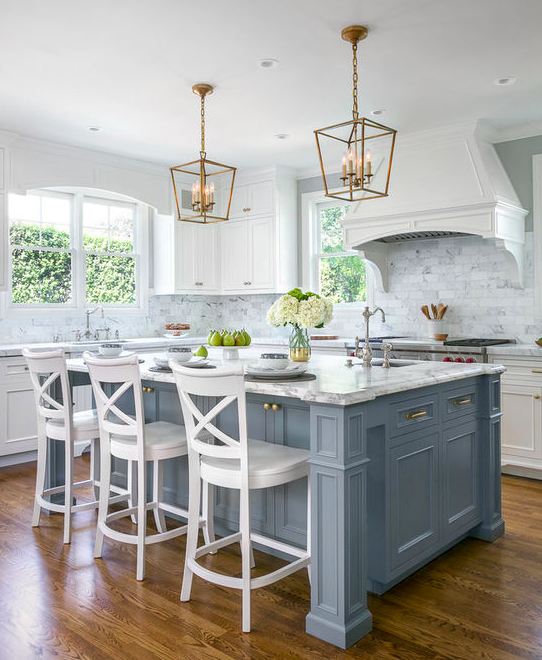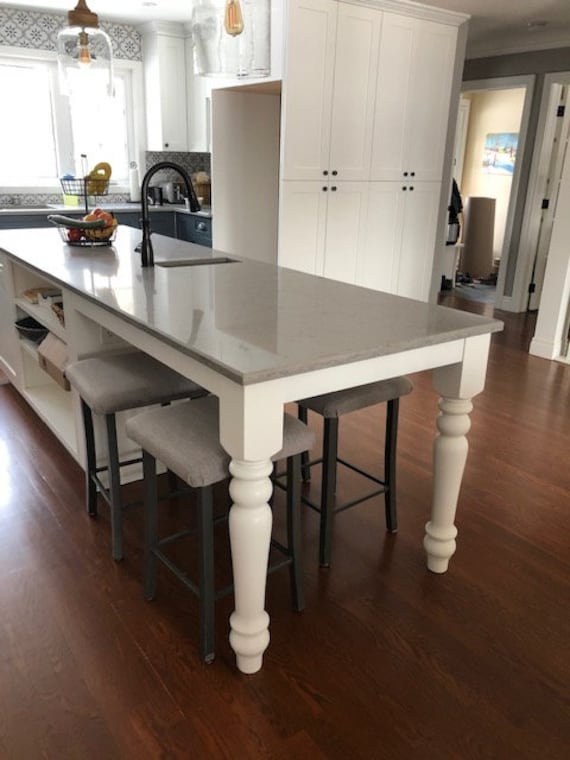Just how to Mount a Kitchen Island Leg for Maximum Security and Style
Just how to Mount a Kitchen Island Leg for Maximum Security and Style
Blog Article
The Value of a Sturdy Cooking Area Island Leg in Creating a Useful Cooking Area
A sturdy kitchen area island leg works as a basic element in establishing a practical cooking atmosphere, supplying required assistance for both the kitchen counter and different kitchen tasks. The stability it offers can dramatically decrease the threat of mishaps in high-traffic locations, while likewise adding to the general visual comprehensibility of the space. As kitchen areas progress right into multifunctional locations for cooking, eating, and interacting socially, the selection of materials and layout factors to consider for island legs becomes progressively crucial. Recognizing these components can change your cooking area right into a more secure and more reliable location, prompting more expedition into the ideal alternatives offered.
Benefits of Sturdy Island Legs
Supplying necessary support, tough cooking area island legs play a pivotal function in improving the performance and longevity of kitchen islands - kitchen island leg. These legs not just birth the weight of the countertop and any extra items positioned on the island, yet likewise add to the overall stability of the framework. A well-supported cooking area island guarantees that it stays useful and upright, even under heavy use, which is specifically crucial in busy kitchen area environments
Moreover, tough island legs can boost the visual charm of the kitchen. They supply a strong framework that can match numerous design styles, from contemporary to typical. This versatility permits homeowners to personalize their cooking area islands according to individual preference while making sure that the architectural honesty remains uncompromised.
In addition to their helpful duty, robust kitchen island legs can also improve security. Inevitably, spending in strong kitchen island legs is vital for a practical and aesthetically pleasing cooking area.
Materials for Kitchen Area Island Legs
When selecting products for kitchen island legs, toughness and aesthetic charm are essential aspects to think about. One of the most typical materials include wood, metal, and engineered wood, each offering special benefits.
Wood, such as oak, maple, or cherry, is a traditional selection as a result of its strength and timeless charm (kitchen island leg). It can withstand substantial weight and is resistant to wear, making it excellent for high-use kitchen environments. Furthermore, hardwood can be discolored or repainted to enhance various kitchen designs
Metal legs, commonly crafted from stainless steel or functioned iron, supply a modern-day and commercial appearance. They are unbelievably strong and can sustain significant lots while being resistant to moisture and heat, which is useful in a cooking location. Metal legs can likewise be easily cleaned, enhancing their usefulness.

Layout Factors To Consider for Stability
The choice of materials for kitchen island legs straight influences the style considerations for stability. When developing a kitchen area island, it is vital to review the weight-bearing capability of the picked products. Larger products, such as solid wood or steel, commonly provide higher stability, particularly under the stress and anxiety of day-to-day usage.
Additionally, the leg layout need to integrate appropriate geometry to improve stability. A bigger base enhances the support location, reducing the risk of tipping or wobbling. Consideration ought to also be provided to the elevation of the legs; out of proportion leg lengths can cause imbalance, compromising the general stability of the island.
In addition, the distribution of weight across the island is vital. Making sure that the leg placement straightens with the heaviest components, such as devices and kitchen counters, will even more improve security.
Upkeep Tips for Longevity

Cleansing is an additional essential element of maintenance. Depending upon the product of the legs-- whether timber, metal, or composite-- appropriate cleansing approaches need to be used. For wooden legs, a gentle clean with a damp fabric and an appropriate wood cleaner will certainly assist preserve their surface. Metal legs may require a light polish to stop rust and keep their radiance.
Additionally, tightening up bolts and screws routinely can make certain security and protect against tottering. Consider reinforcing the legs with extra braces or sustains to improve toughness if the cooking area island experiences hefty use. Lastly, using a protective surface or sealant can secure versus wetness and stains, extending the lifespan of the legs. By complying with these maintenance tips, property owners can guarantee their cooking area island legs continue to be durable and useful for many years to come.
Picking the Right Leg Style
Regular maintenance guarantees that kitchen area island legs stay tough and useful, however selecting the right leg style is just as important for both appearances and assistance. The selection of leg design can substantially influence the general style and consistency of your cooking area.

Performance is another crucial aspect. Thicker legs or those with a tough base can sustain much heavier counter tops and tools, enhancing the island's utility. Alternatively, slim legs might produce a ventilated look, suitable for lighter layouts but potentially much less supportive.
Conclusion
In recap, the importance of sturdy cooking area island legs can not be overemphasized in the production of a useful food preparation location. These legs supply essential support, boost stability, and add to the total aesthetic of the kitchen area. By carefully picking suitable materials and styles, in addition to carrying out appropriate upkeep practices, the long life and performance of cooking area islands can be made sure. Eventually, buying robust island legs is basic to attaining a safe and effective culinary setting.
A strong cooking area island leg offers as an essential component in establishing a useful cooking atmosphere, providing necessary support for both the kitchen counter and different cooking area activities.Providing important support, tough kitchen area island legs play an essential role in enhancing the functionality and sturdiness of kitchen islands. Inevitably, investing in strong kitchen island legs is crucial for a practical and visually pleasing cooking area.
Consideration needs to additionally anchor be offered to the height of look at these guys the legs; out of proportion leg lengths can lead to discrepancy, compromising the total security of the island.
Wood legs provide heat and a timeless look, while metal legs offer a contemporary and commercial feeling.
Report this page